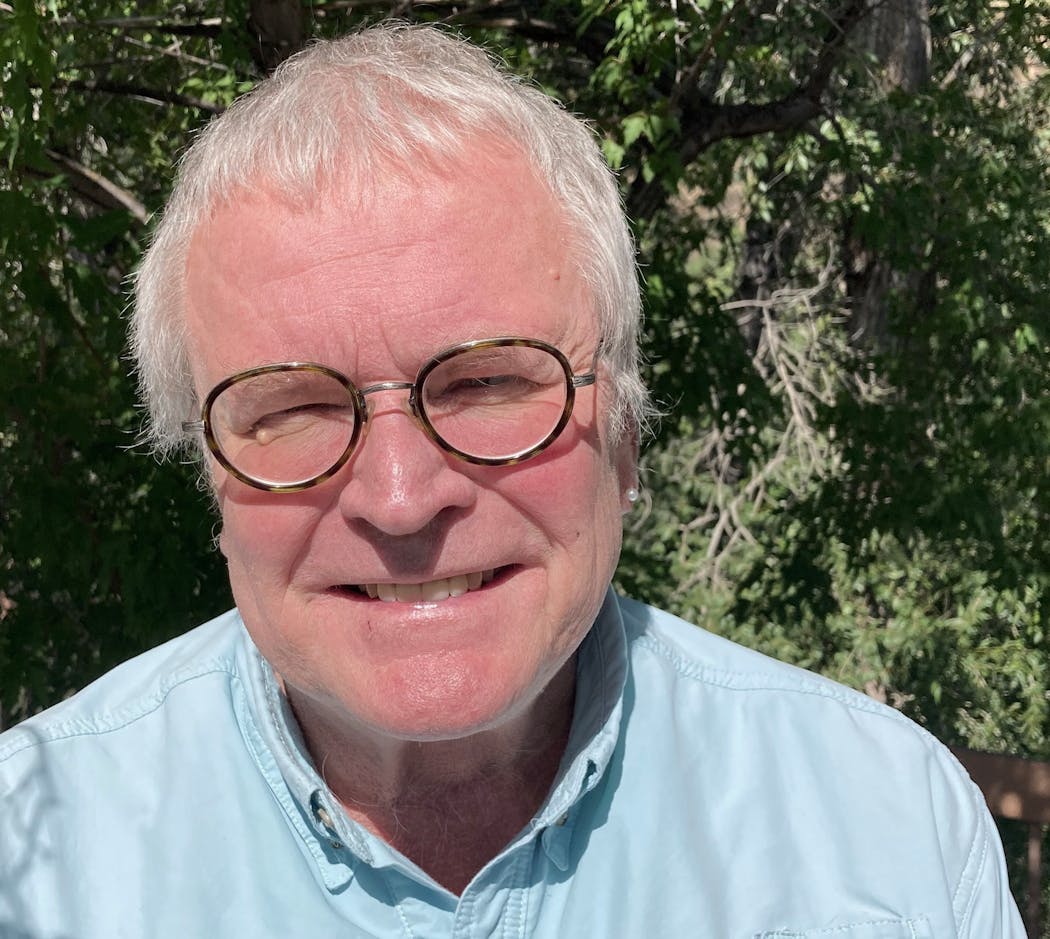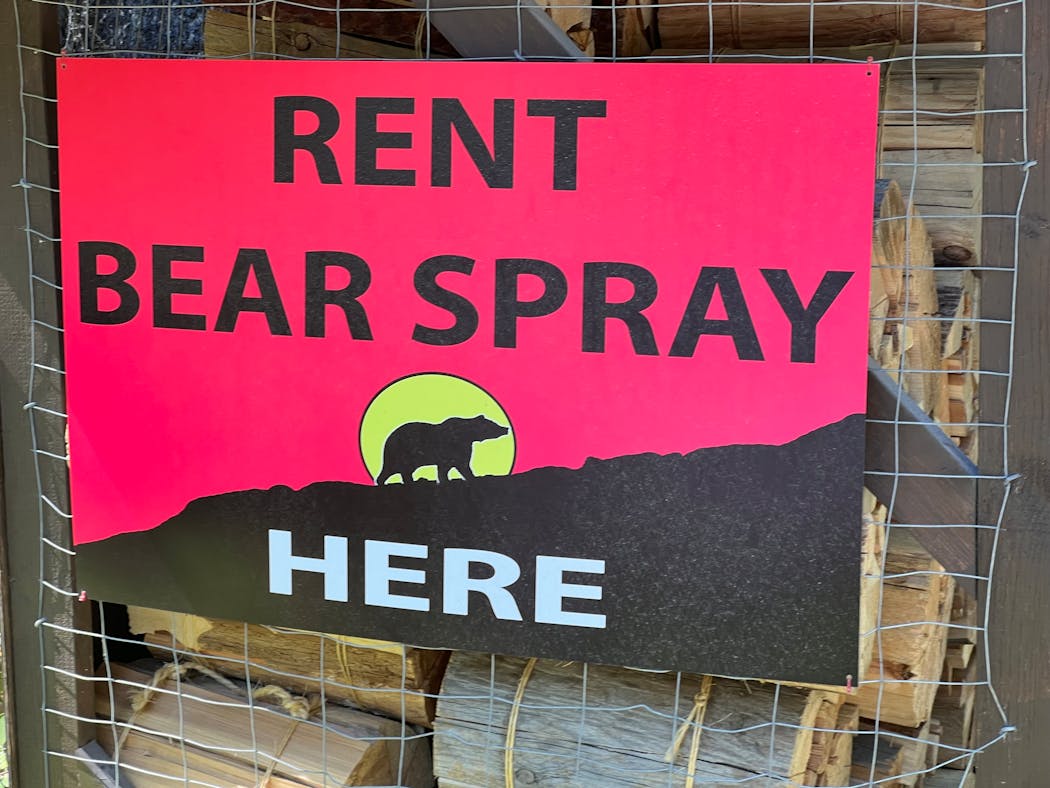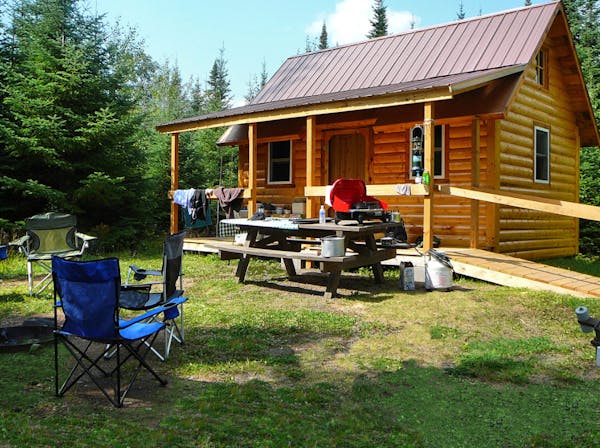GLACIER NATIONAL PARK, MONT. – Not far as the crow flies from where I cast a fly last week into the Middle Fork of the Flathead River, Paul Dunn and his parents pitched camp. The year was 1967. Dunn was 16 years old. The month was August.
Dunn was an ambitious young man. A good student, he was a budding track star for Edina High School, and he was clever with a soccer ball. Even as a kid, he was enamored of the West, and on this trip, Glacier National Park was his family's last stop. Already they had been to Wyoming, had toured the Montana site of Custer's last stand and now, upon leaving Glacier, would camp their way home to Minnesota.
"One morning while we were at Glacier, my parents decided to take a hike, but I said I didn't want to go,'' Dunn, now 72 and living in Colorado, recalled. "Instead I hitchhiked to St. Mary, on the eastern edge of the park, and got a job as a busboy. Then I hitchhiked back, showed the employment note to my parents, and they let me stay when they went home.''
Dunn wasn't the only young Minnesotan working at Glacier that summer. Perhaps hundreds of others did, among them 19-year-old Julie Helgeson, of Albert Lea, a popular and active high school student and rising sophomore at the University of Minnesota who by day labored in the laundry at East Glacier Lodge, where Dunn also had signed on.
Dunn and Helgeson could not know in advance that fate would ensnare them at Glacier on the night of Aug. 12 and early morning of Aug. 13, 1967, during which Dunn was pinned down in his sleeping bag by a grizzly bear, and Helgeson, 20 miles away, was mauled to death by a second grizzly.
Nor could they know those dates would forever mark a turning point in the park's more than half-century history and in the way park officials manage its grizzlies.
Outside of Glacier National Park in 1967, the Vietnam War was dividing the country, and war protests were tearing apart cities and families. Yet the park itself wasn't much different than it had been in the years since its founding in 1910. It was, and in many ways remains, a place of magnificent crystalline rivers, endless foamy waterfalls, jagged mountaintops and, just now, chromatic meadows of blooming wildflowers.
"I loved Glacier then, and I still do,'' Dunn said. "It's a great place and one I've kept in my heart.''
Indeed, for high school and college-aged summertime workers who, like Dunn and Helgeson, bussed dishes, mopped floors, guided dudes and wrangled horses, the million-acre park was a sort of cultural refuge and, on their days off, a wilderness playground — one in which the young adventure seekers routinely bivouacked on the ground, without tents.
It also was a place where a laissez-faire attitude prevailed about bears.
True, the cartoonish feeding of the animals along roadsides that had prevailed at the park and especially at Yellowstone National Park in the 1940s and 1950s had ended. But hikers and campers nevertheless often discarded foodstuffs throughout Glacier — the pack-it-in, pack-it-out ethic had not yet gained steam — and at Granite Park Chalet, a popular long-hike destination in Glacier, the National Park Service tolerated garbage-eating grizzlies that descended on the outpost at dusk, much to the amazement — and amusement — of guests.
All of which set in motion events that some have said had a one-in-a-trillion probability of occurring: the mauling to death on the same night, 20 miles apart, by separate grizzlies, of two young women — Helgeson and Michele Koons, of San Diego — and the serious injury of a young man, Ohio college student Roy Ducat.
Doubling those odds, and perhaps tripling them — especially considering that, until then, no fatal bear attacks had occurred in Glacier — was the fact that two young Minnesotans were involved.
"Play dead.''
That's what Dunn, Helgeson and everyone else who worked at Glacier were told to do if they were confronted by a grizzly. That advice, and a lot of luck, saved Dunn's life, he believes.
"The first time the grizzly came into our camp was when we were preparing dinner,'' Dunn said. "It pretty much took what it wanted, and after it left, we decided to move our camp nearer to the water and build a fire to keep the bear away.''
With Dunn were brothers Ray and Ron Noseck, of Arizona, Californians Denise Huckle and Koons and Koons' dog, Squirt. The group had hiked the day before into Trout Lake. Being a Minnesotan, Dunn, the youngest in the group, had brought a fishing rod. He caught two trout, which he prepared for dinner.
What Dunn didn't know was that an old sow grizzly had been marauding the Trout Lake camp all summer, feasting, at times, on trash left behind by hikers and at other times boldly rummaging through campers' packs and gear. The same bear had raised havoc near Lake McDonald.
Though aware of the animal's mischief, the National Park Service did nothing.
Had that occurred now, in 2023, when the National Park Service aggressively attempts to keep bears and visitors apart, the bear would be shot dead by the service — as a 5-year-old sow was a few weeks ago.
Compared to the trouble caused in 1967 by the Trout Lake bear, the recent miscreant bruin's offenses were minor. It had robbed some food at Many Glacier Campground and hassled picnickers at the Swiftcurrent Lake boat launch. Circa 2023, when so many people hope to crowd into Glacier each summer that a reservation system has been implemented, such "food-conditioned'' bears are feared by park managers for what they might do next.
Thus the need, as the agency calls it, for "euthanizing'' such animals.
"After the bear left our camp the first time,'' Dunn continued, "we arranged our sleeping bags around our fire and built a kind of log barrier between us and where the bear came from. But about 2 in the morning, the bear came back, stole a bag of cookies, disappeared, then came back a final time about an hour later.''
This time, the bear sidled alongside Dunn before hovering over him, laboriously inhaling and exhaling for what seemed like forever. When one of the others whispered, "Play dead, you'll be all right,'' Dunn did that and remained still beneath the hulking animal.
"Then the bear bit my sleeping bag, tearing my sweatshirt, and I said to myself, 'I'm out of here,' " Dunn said. "It was nuclear fast. I bolted and climbed a tree.''
Lying nearby, Koons wasn't so lucky. As the bear lumbered from camper to camper, she found Koons, who struggled but couldn't get free from her sleeping bag.
"My arm is gone,'' she screamed as the bear disappeared into the dark, dragging her, still cocooned in her bedroll. "Oh, my God! I'm dead!''
"The rest of us had climbed trees, and we stayed there until dawn,'' Dunn said. "Then we got our asses out of there.''
By that time, about 20 miles away, Helgeson was already dead, mauled on her first trip into Glacier's outback by one of the bears that fed on garbage at Granite Park Chalet. The same bear seriously injured Helgeson's hiking companion, Ducat, who slept on the ground alongside her near the chalet.
When I phoned Dunn the other evening to ask him about events that happened 56 years ago this month, he said he "had parked all of those memories in my brain'' and rarely talks about them.
"It was a pact that linked us survivors that said we would tell our stories once, then let it go and not publicize it from there or sensationalize it, and for the most part I've adhered to that,'' he said. "Living here in Colorado, in my lifetime, I've been in many conversations in which someone tells a bear story — about how they escaped or whatever — and I never say anything. I don't feel the need.''
Dunn enjoyed growing up in Minnesota, he said, where as a kid he delivered the Minneapolis Tribune. He fondly recalled that he and three Edina classmates hold the state high school record for the mile relay — a record set in 1968 that won't be broken because the event is no longer run.
Read the article below or click here to read the story.
Then he said, "Did you read the article in the recent New Yorker about bears?''
The story, by Jill Lepore, reports that about 1,000 grizzlies now roam Yellowstone National Park, about twice as many as in 1975.
A similar increase in grizzly numbers has occurred in Glacier, in part due to protection afforded the animals in 1975 by the Endangered Species Act and in part due to public information campaigns by the National Park Service and others that instruct people — vacationers perhaps especially — how to live with these animals.
The key is not to leave unsecured food or garbage lying around, which can "food condition'' bears in ways that can lead to trouble with people.
"I think everything that happened in 1967 would have been harder on me,'' Dunn said, "if I had been older, But at 16, I was just a kid. I think that made it easier. I hung in there the rest of the summer, working at Glacier. I even came back a few summers later and worked there again.
"My stepdad, he was old-school. After he heard what had happened with the bears, he said, 'Pull yourself up.' I was probably in shock. But I was OK. At the end of the summer, I took the Great Northern train back to Minneapolis and St. Paul. The ride was long, and we made a lot of stops.''
Star Tribune librarian John Wareham contributed research to this column.
For more, read "Night of the Grizzlies,'' (Homestead Publishing, $15.95) by Jack Olsen.
Anderson: Canoeist found dead in BWCAW was experienced

Anderson: In early June, Minnesota fish are begging to be caught. Won't you help?





